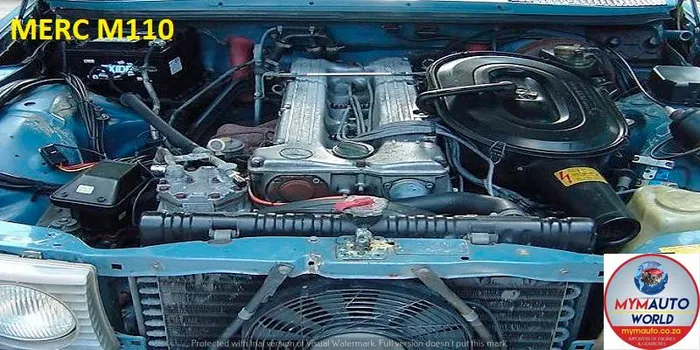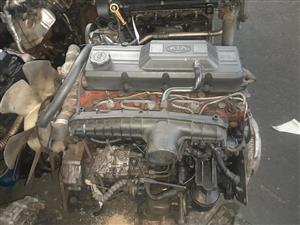Exploring the current Technological Developments in Import Engines and Just How They Improve Driving Experience
In the realm of vehicle engineering, the landscape of import engines is undertaking an extensive change driven by advanced technological technologies. From the development of turbocharged engines to the assimilation of crossbreed technology, the most recent innovations are reinventing the driving experience in means previously inconceivable. As import suppliers press the boundaries of efficiency and effectiveness through improved fuel shot systems and innovative engine monitoring services, the question emerges: Just how do these innovations genuinely influence the way we communicate with our cars when traveling?

Development of Turbocharged Engines
In the auto industry, the evolution of turbocharged engines has significantly changed the landscape of performance and performance. Turbocharging, when mostly seen in high-performance cars, has currently end up being a mainstream innovation embraced by a large range of automobiles, from compact hatchbacks to deluxe cars. The essential concept behind a turbocharged engine is basic yet reliable - forcibly even more air right into the burning chamber, it permits more fuel to be burned, leading to raised power output.
Among the vital benefits of turbocharged engines is their ability to supply more power from smaller, more fuel-efficient engines. This downsizing fad has actually brought about a decrease in emissions without compromising performance, making turbocharging an attractive choice for car manufacturers making every effort to satisfy rigid ecological policies. In addition, turbocharged engines provide enhanced torque at lower RPMs, providing motorists with a more receptive and dynamic driving experience - import engines.
As innovation remains to advance, we can expect further developments in turbocharging, resulting in even greater degrees of performance and performance in the automotive industry.
Advancements in Gas Shot Solutions
Modern fuel shot systems have actually advanced to deliver gas much more successfully and exactly into the engine cylinders, enhancing general engine efficiency and gas performance. One of the vital technologies in fuel shot systems is the shift from traditional port gas injection (PFI) to more sophisticated direct gas shot (DFI) modern technology.
Furthermore, the combination of electronic control systems (ECUs) and sensing units in fuel shot systems has enabled real-time changes to sustain distribution based on various variables such as engine load, temperature, and driving problems. This level of accuracy ensures ideal fuel-air mixture ratios, taking full advantage of engine efficiency while minimizing fuel consumption and exhausts. Furthermore, improvements in fuel injector layout, materials, and spray patterns have actually added to cleaner burning and smoother engine operation. To conclude, the continuous advancements in fuel shot systems play an important role in improving driving experience by giving enhanced efficiency, fuel economic climate, and ecological kindness.
Combination of Hybrid Modern Technology
The evolution of gas injection systems towards greater performance and efficiency has established the stage for the smooth assimilation of crossbreed technology right into modern engines. Hybrid innovation integrates the usage of typical internal burning engines with electrical propulsion systems, providing improved gas performance and minimized emissions. By incorporating electric motors and batteries right into the powertrain, crossbreed engines can supplement the internal combustion engine during acceleration or reference low-speed driving, consequently boosting total efficiency.

Boosted Engine Monitoring Solution
What are the crucial advancements in engine monitoring systems that are boosting the performance and effectiveness of modern-day engines? Engine management systems have undergone considerable improvements to maximize engine performance and effectiveness. One essential advancement visit this site right here is the combination of sophisticated sensors that continually keep track of various criteria such as engine temperature level, air-fuel ratio, and exhaust discharges. These sensing units provide real-time data to the engine control unit (ECU), permitting precise changes to be made to enhance combustion processes and gas effectiveness.
Additionally, modern engine administration systems make use of advanced formulas and synthetic knowledge to examine the data gathered by sensing units and make vibrant modifications to variables such as ignition timing, fuel shot, and turbocharger boost stress. This degree of accuracy and adaptability outcomes in enhanced engine responsiveness, raised power outcome, and minimized fuel usage.
Furthermore, engine management systems currently include sophisticated diagnostic capabilities that can identify and attend to issues such as misfires, sensor breakdowns, and gas system abnormalities in real-time, consequently enhancing total engine dependability and long life. These innovations in engine management systems play an important role in improving the driving experience by supplying optimal performance, fuel performance, and dependability.
Effect of Lightweight Materials
Incorporating light-weight products in engine production has changed the vehicle market's method to boosting fuel effectiveness and efficiency. Using products such as carbon titanium, aluminum, and fiber has actually substantially reduced the general weight of engines, bring about enhanced power-to-weight proportions and boosted gas economic climate. These lightweight materials supply a higher strength-to-weight proportion compared to typical materials like steel, allowing for higher durability without jeopardizing performance.
Among the vital advantages of using lightweight materials in engine construction is the decrease of inertia, resulting in quicker engine feedback times and enhanced overall car dexterity. Furthermore, the lighter weight contributes to decrease power intake, making vehicles a lot more environmentally friendly by decreasing exhausts.
Additionally, the application of lightweight materials in engine components such as pistons, attaching poles, and crankshafts has enabled designers to press the boundaries of efficiency without sacrificing integrity (import engines). This advancement has actually led the way for extra effective and powerful engines that supply a premium driving experience while meeting strict discharges requirements
Conclusion
Finally, the current technical advancements in import engines have actually significantly boosted the driving experience. From the evolution more tips here of turbocharged engines to developments in gas shot systems, integration of crossbreed technology, boosted engine administration systems, and making use of lightweight materials, these technologies have collectively enhanced performance, fuel effectiveness, and total driving characteristics. As modern technology proceeds to breakthrough, we can expect much more exciting developments in the future of import engines.
Modern gas injection systems have evolved to supply fuel much more successfully and exactly right into the engine cylinders, improving overall engine efficiency and gas efficiency - import engines. By incorporating electrical motors and batteries right into the powertrain, hybrid engines can supplement the internal combustion engine during velocity or low-speed driving, consequently boosting overall efficiency
What are the vital improvements in engine administration systems that are enhancing the performance and efficiency of modern engines? Engine management systems have gone through considerable advancements to optimize engine efficiency and efficiency. From the development of turbocharged engines to improvements in fuel shot systems, integration of hybrid modern technology, improved engine administration systems, and the usage of light-weight products, these technologies have collectively enhanced efficiency, fuel effectiveness, and general driving dynamics.